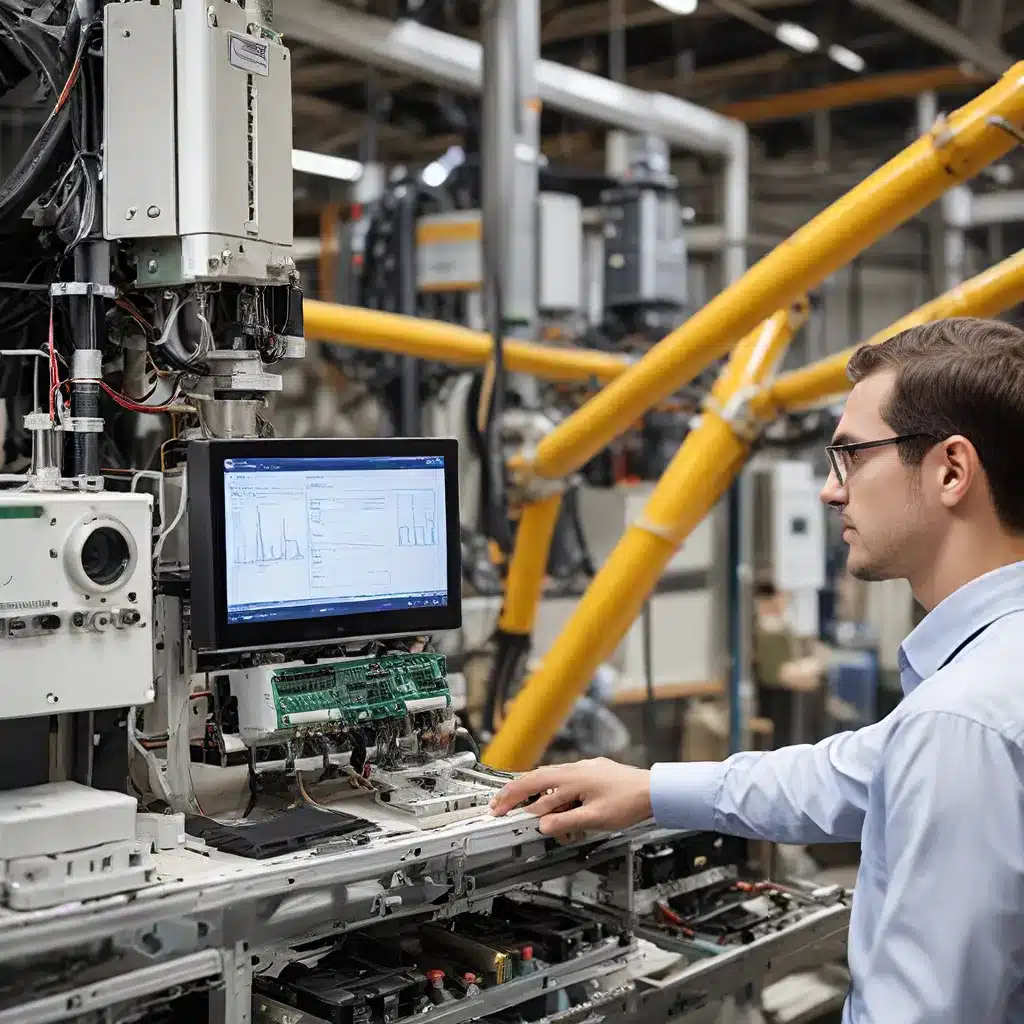
Navigating the Complexities of Sensor Network Design
As the world continues its march towards an increasingly connected future, the role of sensor networks and Internet of Things (IoT) technologies has become paramount. These advanced systems serve as the digital nervous system, enabling real-time monitoring, data-driven decision-making, and optimization across a wide range of industries, from manufacturing and logistics to smart cities and beyond.
Adapting to the Scale and Diversity of IoT Deployments
One of the key challenges facing IoT adoption is the sheer scale and complexity of modern deployments. Imagine a large-scale manufacturing facility, where hundreds or even thousands of sensors are tasked with monitoring various processes, equipment, and environmental conditions. Ensuring the accuracy and reliability of these sensor networks is crucial, as even minor discrepancies can have cascading effects on production efficiency, quality control, and safety.
NVIDIA’s Metropolis platform has emerged as a powerful solution for managing and automating these complex IoT environments. By leveraging a microservices architecture, Metropolis enables the scalable deployment of multi-camera AI applications, with a focus on resilience and security. This modular approach allows for the independent development, deployment, and scaling of each microservice, making the overall system more flexible and easier to maintain.
Addressing the Challenges of Sensor Calibration
One of the key components of a successful IoT deployment in the manufacturing sector is the calibration of sensor networks. Proper sensor calibration ensures that the data collected is accurate, consistent, and representative of the actual processes and conditions being monitored. However, as the scale and complexity of these deployments increase, traditional manual calibration methods quickly become inefficient and impractical.
Empowering Distributed Sensor Calibration
To address this challenge, researchers and engineers have developed distributed sensor calibration algorithms that leverage the power of IoT technologies and edge computing. These algorithms enable the automated, continuous, and decentralized calibration of sensor networks, ensuring that the entire system remains accurate and resilient even as new sensors are added or existing ones are replaced.
One such approach, explored in a recent SBIR report, involves the use of Kalman filters and consensus-based optimization techniques to achieve distributed sensor calibration. By leveraging the computational power of edge devices and the interconnectivity of the IoT network, these algorithms can self-calibrate, adapting to changes in the environment and ensuring the integrity of the sensor data across the entire system.
Enhancing IoT Security and Energy Management
As the adoption of sensor networks and IoT technologies continues to grow, two critical aspects that must be addressed are security and energy management.
Securing IoT Deployments
IoT devices often operate in uncontrolled environments and are vulnerable to various cyber threats, from hacking and data breaches to unauthorized access and system manipulation. Implementing robust security measures is crucial to protect the integrity of the sensor data and the overall system.
Cisco’s IoT security solutions, for example, offer a comprehensive approach to securing IoT deployments, including device authentication, data encryption, and network segmentation. By employing these strategies, manufacturers can mitigate the risks associated with IoT vulnerabilities and ensure the confidentiality, integrity, and availability of their sensor networks.
Optimizing Energy Efficiency in IoT
Another critical factor in the success of IoT deployments is energy management. Sensor networks often operate in remote or hard-to-access locations, making power consumption a significant concern. Inefficient energy usage can lead to increased operational costs, reduced battery life, and limited scalability of the IoT system.
Analog Devices’ IoT solutions address this challenge by incorporating energy-efficient hardware designs and power management algorithms. These techniques enable sensor nodes to optimize their power consumption based on factors such as workload, environmental conditions, and energy availability. By adopting these strategies, manufacturers can extend the lifespan of their IoT deployments and reduce the overall operational costs.
Unlocking the Potential of Sensor Networks in Manufacturing
The convergence of distributed sensor calibration algorithms, IoT security measures, and energy-efficient design is paving the way for a new era of scalable, resilient, and sustainable sensor network deployments in the manufacturing industry.
Driving Efficiencies and Insights in Smart Manufacturing
By leveraging these advanced technologies, manufacturers can enhance their production processes, improve quality control, and optimize resource utilization. Accurate and reliable sensor data, coupled with real-time analytics and decision-making, enables manufacturers to identify and address bottlenecks, anticipate equipment failures, and adapt to changing market demands with agility.
Sensor-networks.org serves as a hub for innovation and collaboration in the field of sensor networks and IoT, providing a wealth of resources, case studies, and industry insights to help manufacturers harness the power of these transformative technologies.
Towards a Future of Intelligent, Resilient, and Sustainable Manufacturing
As the digital transformation of the manufacturing sector continues to accelerate, the role of sensor networks and IoT will only become more critical. By embracing the latest advancements in distributed sensor calibration, IoT security, and energy-efficient design, manufacturers can unlock new levels of efficiency, productivity, and sustainability – paving the way for a future of intelligent, resilient, and adaptive manufacturing ecosystems.